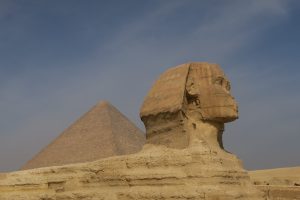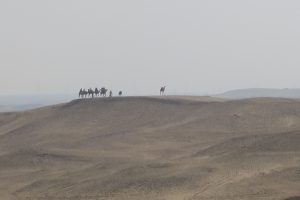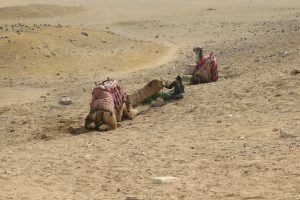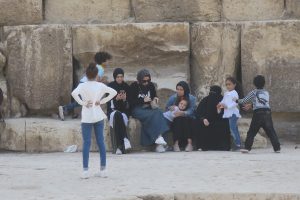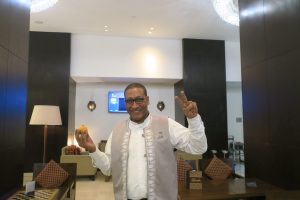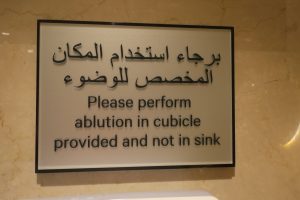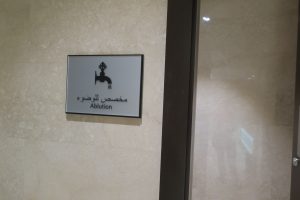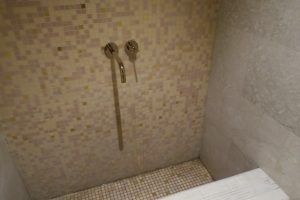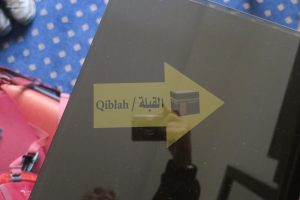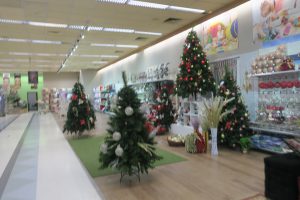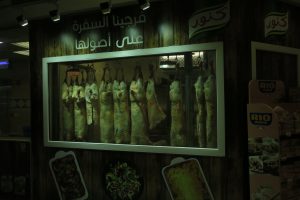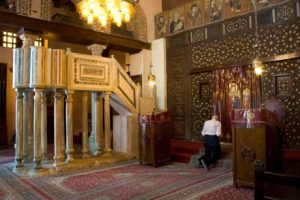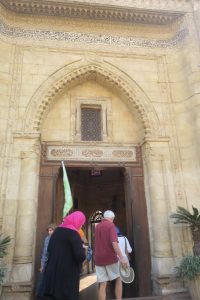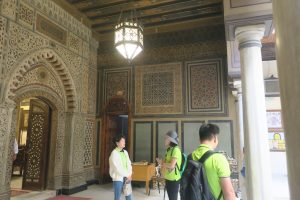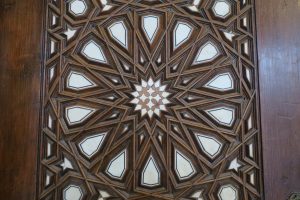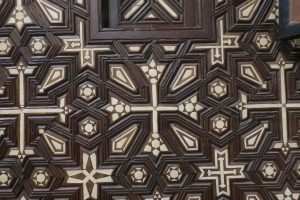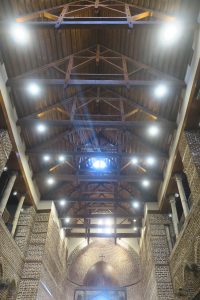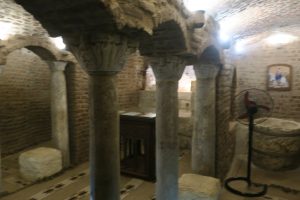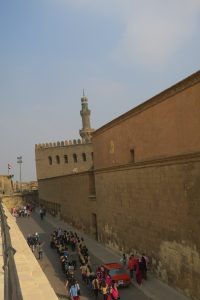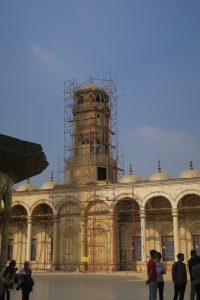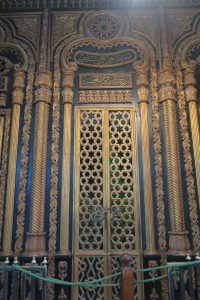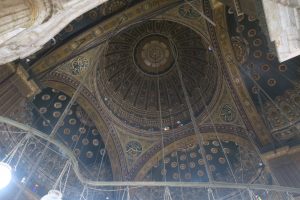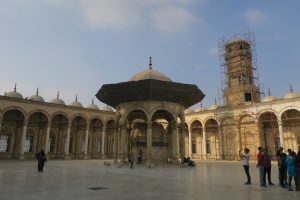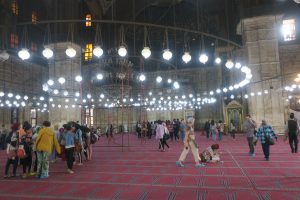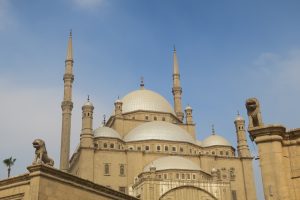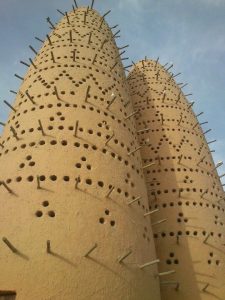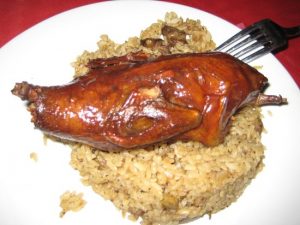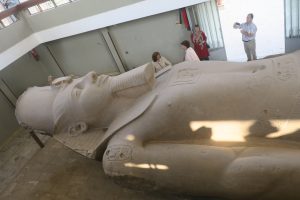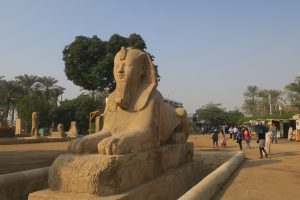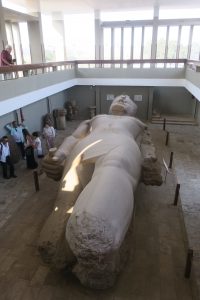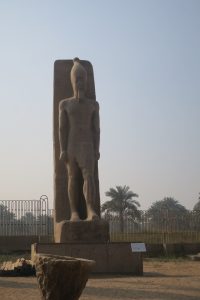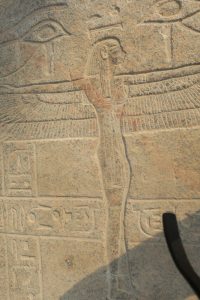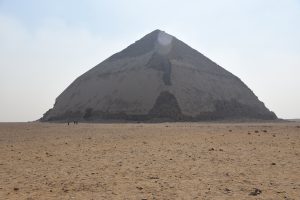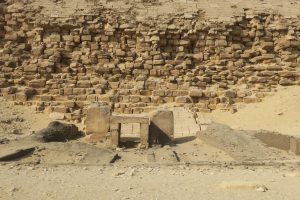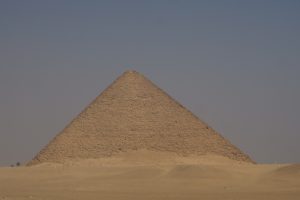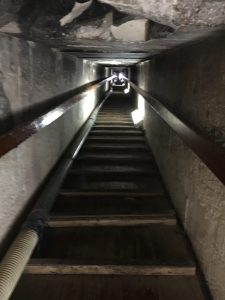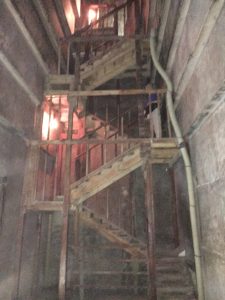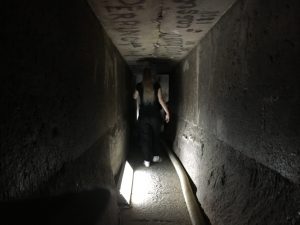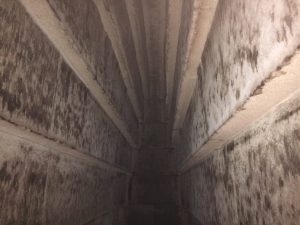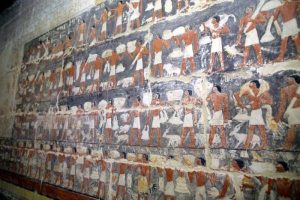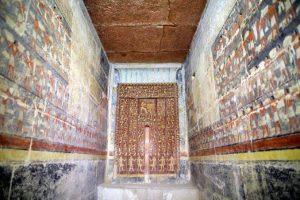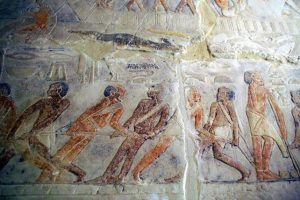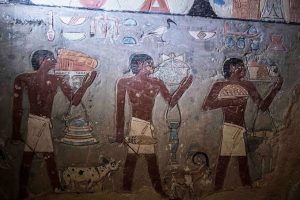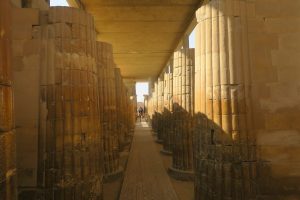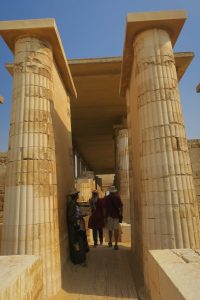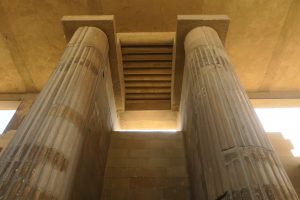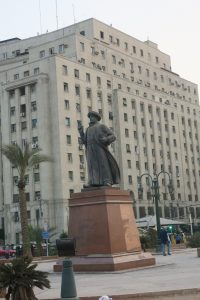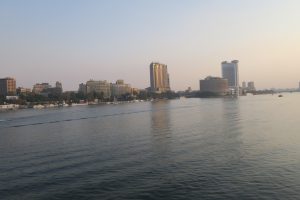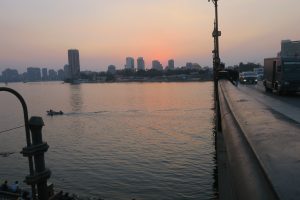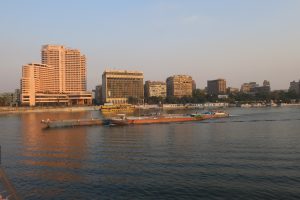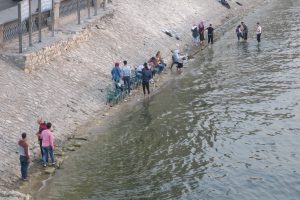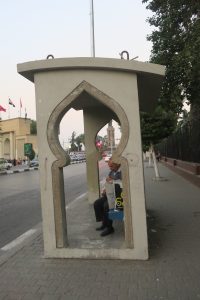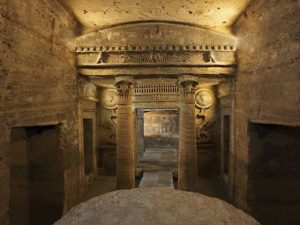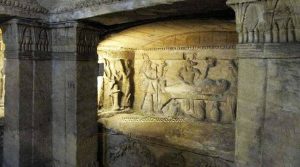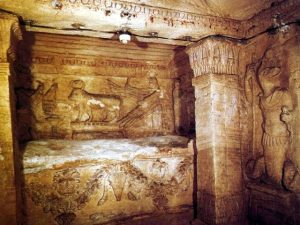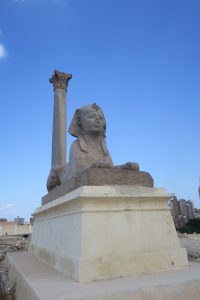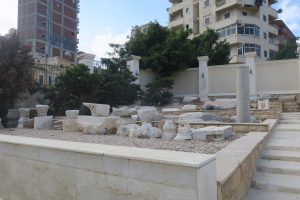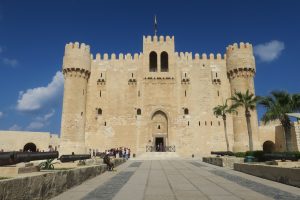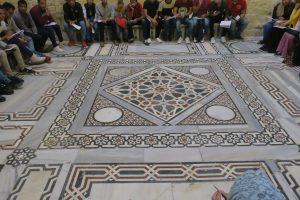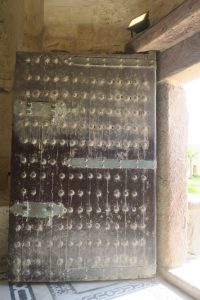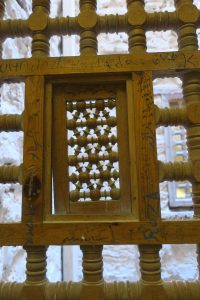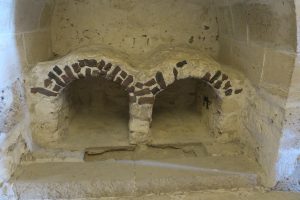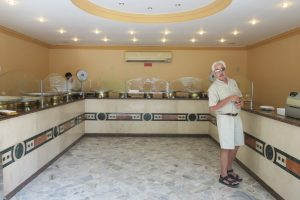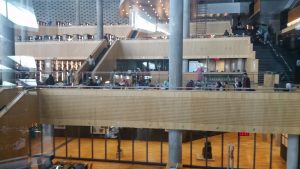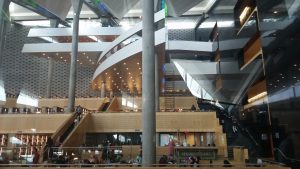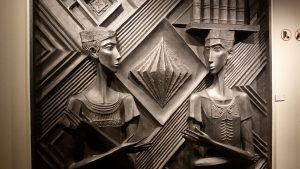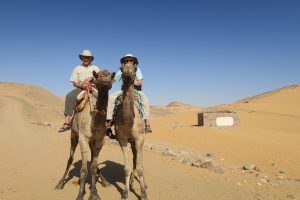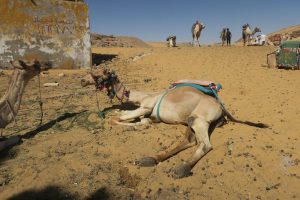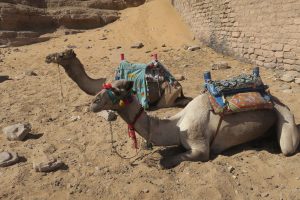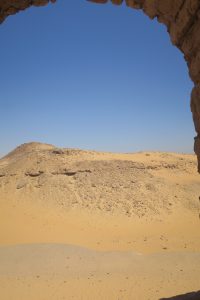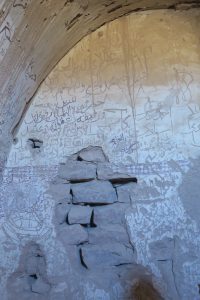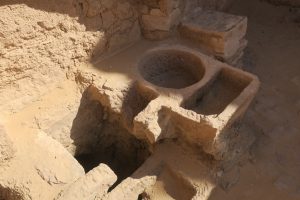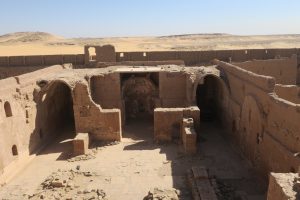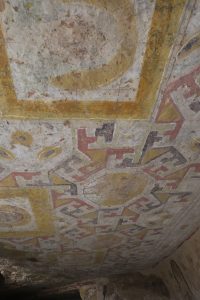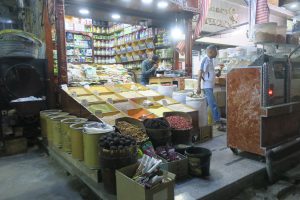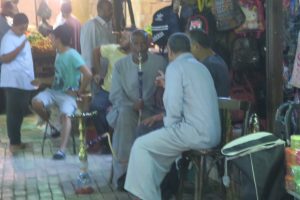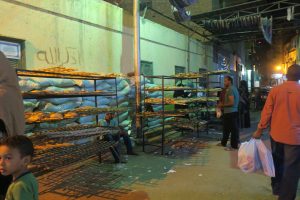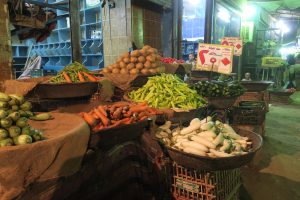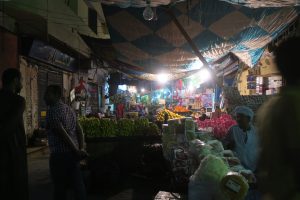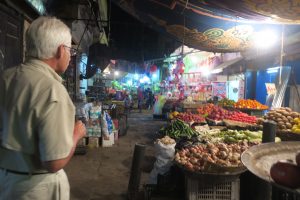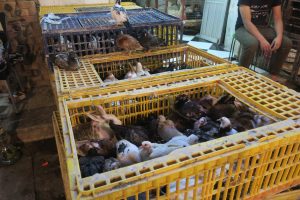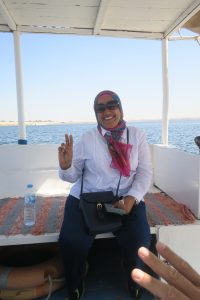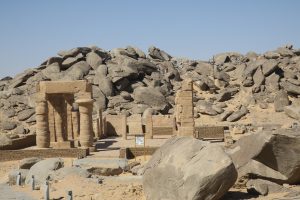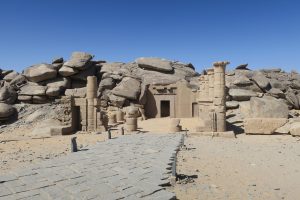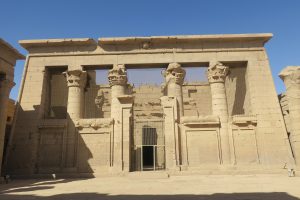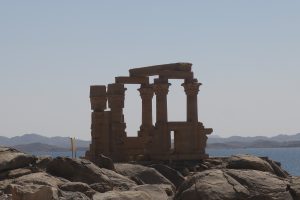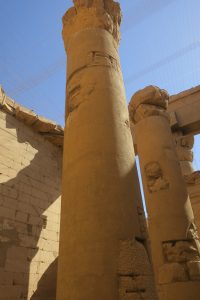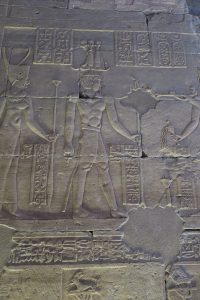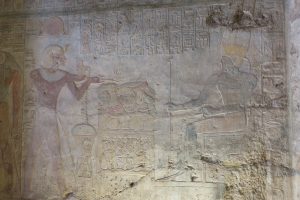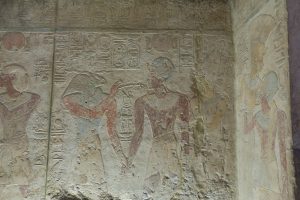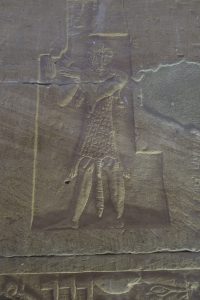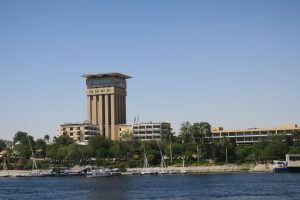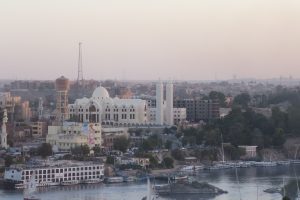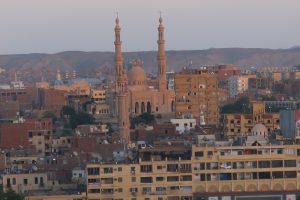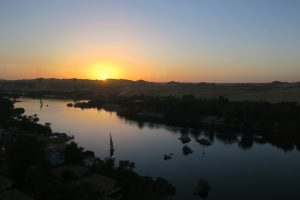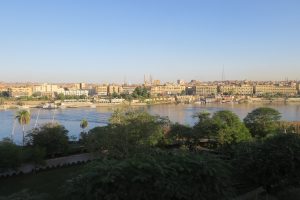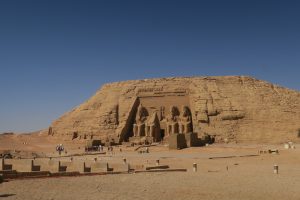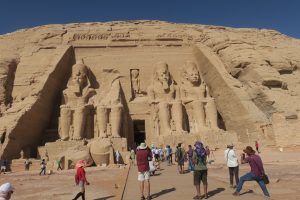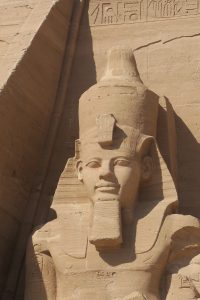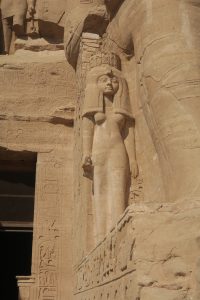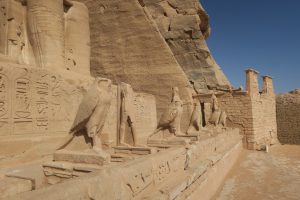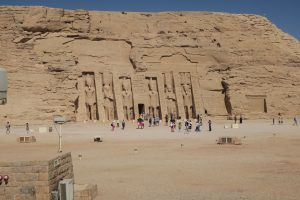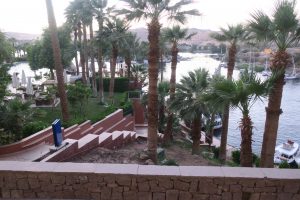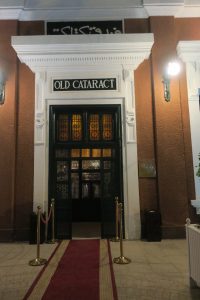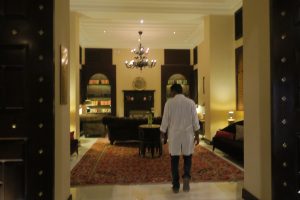Today is our last full day in Cairo and we are going to visit the pyramids. We have driven by them several times so we have seen them in the distance but not up close and personal. We left at 7:30 in an attempt to beat the crowds. Unfortunately the day started off hazy which is typical in the winter.
We started at The Great Pyramid of Giza (also known as the Pyramid of Khufu or the Pyramid of Cheops) which is the oldest and largest of the three pyramids in the Giza complex. It is the oldest of the Seven Wonders of the Ancient World and the only one to remain largely intact. Egyptologists believe that the pyramid was built over a 10- to 20-year period concluding around 2560 BC as a tomb for Pharaoh Khufu. At 481 feet, the Great Pyramid was the tallest man-made structure in the world for more than 3,800 years. Originally, the Great Pyramid was covered by limestone casing stones that formed a smooth outer surface; what is seen today is the underlying core structure. I thought it had been built by slaves but Nahed said that most of the labor was done by farmers during the flood season. (In ancient times there were three seasons-flood, planting, and harvest.)
Then we moved on to the Pyramid built by Khafre and the one built by Menkaure, son and grandson of Khufu, respectively. They are both smaller than The Great Pyramid but impressive nonetheless. We drove out to a look out to get a good look at all three. Here’s a picture (you can see it was a little hazy).
 Next we drove over to the Sphinx. It is the oldest known monumental sculpture in Egypt and is commonly believed to have been built during the reign of the Pharaoh Khafre (c. 2558–2532 BC).
Next we drove over to the Sphinx. It is the oldest known monumental sculpture in Egypt and is commonly believed to have been built during the reign of the Pharaoh Khafre (c. 2558–2532 BC).
Having “done” the Pyramids, Nahed took us shopping, specifically we went to a government gift shop, a papyrus shop and a cotton shop. We didn’t buy anything at any of the shops, although we were tempted at the papyrus shop by the pieces that had an alternate image when the papyrus was held under a black light. We walked out of all the shops empty-handed.
At this point it was a little less hazy so we wanted to return to the Pyramid complex to get some better pictures. Our tickets were good for the day, but the car entrance ticket was a single use only. So Nahed and our driver dropped us off at the complex entrance where we said good bye. We walked for 45 minutes from the entrance to the outlook. Luckily it wasn’t too hot that day. There were lots of vendors offering to give us a camel ride or to take us to the lookout in a horse drawn carriage. Here are much better clearer pictures of the pyramids and the camels at the outlook.
A couple of days ago I wrote about the women who are all covered up. Here’s a picture of a lady at the pyramids. It doesn’t look very comfortable to me but it quite common to see.
After taking a bunch of pictures we walked back to the entrance and went to the Marriott Mena House, a hotel overlooking the Pyramids. We had a very nice, relaxing lunch of Indian food there. We ubered through the terrible Cairo traffic back to our hotel.
That evening we went down to our favorite restaurant and I gave our bartender friend, Mina, the orange I had knitted for him. As you can tell from his smile, he liked it.

